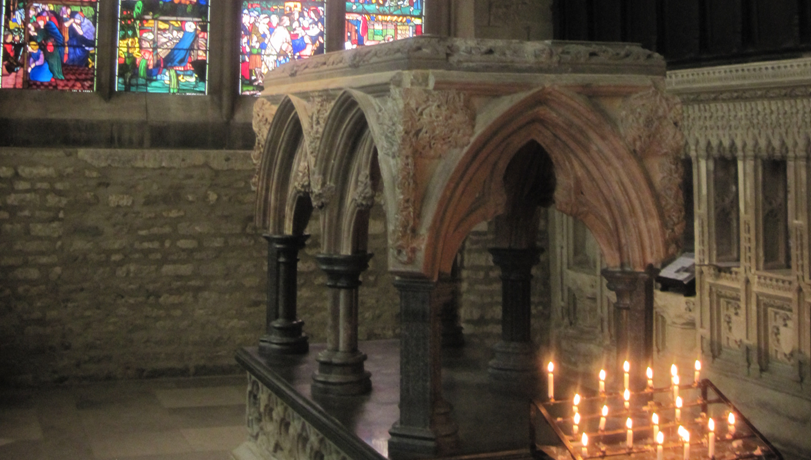Stained glass in Chichester Cathedral, depicting St. Wilfrid
St. Wilfrid was born in the kingdom of Northumbria in 633. After becoming a monk at Lindisfarne, he traveled around studying in different ecclesiastical centers in England and the continent. He returned to Northumbria establishing a monastery Ripon, now a Cathedral, and argued for the Roman rites and calculations of Easter at the controversial Synod of Whitby causing much distress among the Celtic Church which had been taken on in the north of the Kingdom and accepted by the royal family. Eventually the roman side won, and many of the Celtic monks at Lindisfarne returned to Iona from whence they had been called by King Oswald. Wilfrid was rewarded for his argument at the synod and appointed to the episcopal see of York. As the premier bishop of Northumbria he had jurisdiction over the other northern bishoprics. Wilfrid left to be consecrated in Gaul but did not return for several years and as a result St. Cedda of Lichfield was installed as the Bishop. He was more concerned about the state of the diocese, but when Wilfrid returned Cedda was deposed and returned to be bishop of Lichfield. Be for Wilfrid's death in 709, he established another monastery at Hexham, which became a bishopric under the supervision of St. Theodore of Canterbury. The holiness of Wilfrid is often disputed, many think that his argument during the Synod of Whitby was not genuine; that his reason for canceling the rites of the Celtic Church was really an impetus for power, which he later revived as Bishop of York. Even as Bishop, however, Wilfrid seemed to neglect his diocese and recognize it only as a title.


No comments:
Post a Comment